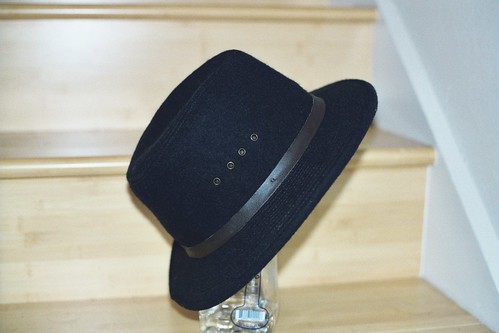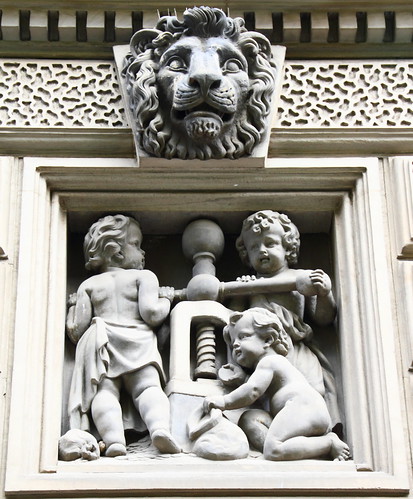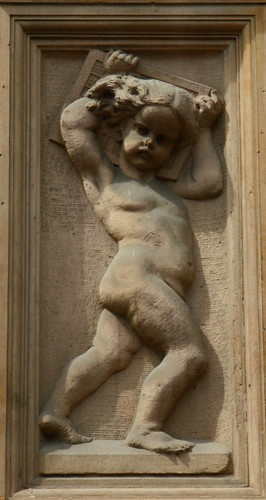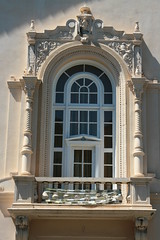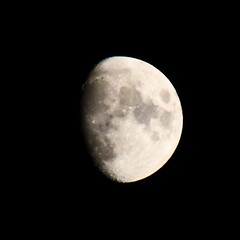It’s time for another In Retrospect post, a “remember-what-we-were-doing-then” type of thing that serves to remind us of where we’ve been, and how far we’ve come (or gone, as the case may be). We’ve traveled far in the past ten or eleven years – in retrospect:
 |
Taken June 1, 1999. We’d made our way out to Rouge et Noir, on the Marin coast. We loved to visit them because of their wonderful cheese factory, where, if you were lucky, you could watch them making Brie and Camembert. The factory had been around since 1865, out there in the wilds of Marin. Sometimes we’d visit just to sit on the benches and look at the ducks, other times we’d buy some cheese and a loaf of bread, and carry away the makings of our picnic further up along the coast.
 |
 |
 |
 |
 |
 |
4 years later, June 1, 2003, found us at the University of San Francisco to pick up D’s graduation gown. We took the opportunity of the emptiness of the cathedral to stop and take a few pictures. There’s a certain loveliness to this vast old space, isn’t there? D. didn’t have a tripod back then. Or, at least, he wasn’t dragging it everywhere as he does now. *Ahem.*
D. had finished his first Master’s degree (or would within the month), and we were so relieved to have the long slog be over. If only we’d known! Although he did apply to a few programs before and after graduating from USF, it was to take us another four years to finally get D. back into school, and this time to stay on for the PhD!
 |
 |
|
 |
 |
 |
 |
Just a year later found us moving into our second flat, here in Glasgow. D. had already committed to doing the PhD, and we moved into what we hoped would be a better flat. Regular readers well know it didn’t turn out that way, but we loved it anyway, if only for its stained-glass windows. The neighbor with the six food speakers, the boiler troubles that left us without central heating or hot water for three months, the darkness … well, how could we have known?
 |
 |
 |
 |
 |
 |
And, finally, June 1 last year found us in the Dolomite Mountains of Italy, taking a tram up the side of the mountain near Bolzano to eat … well, food which was more Austrian than Italian. It was a wonderfully stormy trip, with lots of rain and wild wind, yet not too chilly, either. The sky above the Dolomites was nearly as dramatic as that above Glasgow, and we truly enjoyed the trip, for all that it was a strange place to people unfamiliar with Northern Italy. In the old stone castles, in the sun-drenched town squares, over cups of thick hot chocolate and overlooking miles of vineyards, it was blessedly peaceful: the perfect antidote for deadlines and hurry.
Who knows what we’ll do today? Happy June.
Still Using FaceHook?
Well, T. has left the Face Hook as well. We’re now free from the evil, although nobody knows what will happen to the data we gave away there. Still in doubt? This article, pointed out by delzey at fomagrams is worth a read. Please do read it, if you’re still giving away your intimate details. It’s important. WAY more important than your virtual farm. Honestly.
-D
Felt hats shrink!
Anybody know how to stretch a felt hat? I love this thing, but it’s grown smaller, each time it’s gotten wet (which has been many times since coming to Scotland). I really would like to stretch it back out and wear it, because it’s a wonderful hat. As it is, though, it sits, not being worn, because it makes my head hurt.
Any ideas? I’ve tried getting it wet & putting things into it (a bag of rice was the last attempt), with no results. Next try will be those shoe-stretching things, I guess. I just can’t think what else to do.
-D
Glasgow: where the wee are really, really strong
Some of the expressions of the Glaswegians are … well, odd. I’ve heard someone called “wee man” and “big man” … in the same conversation. Now, to me, “wee” and “big” are sort of opposites. Either something is “wee” or it’s “big,” but it cannot be both. The really strange thing was that, in the context of the conversation, it made sense. “How’s it going, wee man?” To this, our database administrator poured out his woes, detailing his long nights, lost weekends, and endless conversations with Microsoft. After that, something was said along the lines of, “oh, aye, well, you’ll sort it oot, big man.”
Now, the “wee man” I could understand: our man, here, doesn’t top 100 lbs / 45 kgs. He truly is wee. He’s a man who eyes my teacup with awe: he claims that, if he were to drink a full teacup, he wouldn’t be able to eat lunch. He only ever takes a half-full teacup.
The “big man,” though, I think … is something else entirely. It does beg the question, though, as to why it’s used so ambiguously. I’m never “wee man,” but am called “big man” by all sorts of people, most of whom I have never met before in my life. So. Right. “Big” and “wee” do not necessarily mean “big” and “small.” Or something.
To continue with the linguistic odyssey, there is, apparently, a neighborhood in Glasgow in which everybody calls everybody “pal.” As in, “thanks, pal,” or, “how’s it going, pal?” To our ears, “pal” is … well, something out of a 1930’s gangster movie, probably something spoken by Bogart, out of the corner of his mouth, around a cigarette, and with menace: “watch your back, pal, ’cause I’ll be watchin it too, see?”
To have a coworker ask, “how’s you, pal?” Well, that’s a bit odd. To have a delivery guy say, “thanks, pal?” That’s downright bizarre. It happens, though, and it’s … disconcerting.
We continue to be amazed at this land. One last thing: Glaswegians? They’re otherwise known as “weegies.” Again, with the “wee.”
-D
Music Makes Home
So, we’re having a relaxing evening, playing Lexulous with relatives, each of us on our own computer, listening to Putomayo Music’s Latin Playground (at the moment – awhile ago it was the Out of Africa soundtrack, before that the Brandenburg Concertos).
I looked over at T., at the beginning of the last song, and realized: Latin music is home for us both. She was dancing in her chair, as was I.
Last time we were home, while T. was getting her hair done, I went out for lunch. I went to a little Mexican restaurant and actually sat in, rather than taking away – it was simply so familiar, and tugged at me to stay. It’s strange: the second culture of California said “home” to me in a way which was so much stronger than anything else, and I realized that I’d missed it terribly.
It’s the same, listening to this album, on a full stereo.
Home seems to be Latin America, or, at least, the music of Latin America.
-D
Radio Interview (update)
So, a whole half-hour conversation was distilled down to a single quote. I guess … well, I can live with that. The interview is here. Click through to listen to the least significant quote of the whole thing, so far as I’m concerned. Sigh
-D
Radio Interview
I’ve just been on the phone with Mark Horwich, of American Public Media’s Marketplace radio show. What was supposed to be a ten minute conversation turned into thirty minutes.
We discussed my recent abandonment of FaceHook, just what’s wrong with the site, where they might end up, how they’ve conducted a bait-and-switch with their users, how the site has been designed to dissuade people from managing their privacy and their content, and how the site has locked people in by actively preventing communication. He wanted to know whether I was successful at getting anyone else to leave with me (“I have no way to check”), and whether I thought there was a future for FaceHook.
He also asked how I thought that FaceHook could make money, to which I responded that people would probably have been just as happy to have “instant personalization” if it had been on an opt-in basis, rather than having it forced upon them. Plus, the poor timing of it, as it came with sweeping changes to privacy, have conspired to bring both of these problems to people’s attention.
Have a listen, if you’re anywhere near one of their stations, or listen to them online. I hope to be included in the final broadcast, and will post again when they have a podcast up.
In related news, the Government of Norway claims that FaceHook has been reselling personal information. Does that surprise anybody?
-D
May 20, in retrospect
 |
 |
 |
 |
On May 20, all we seem to have is the year 2008. How distinctly odd! Well … D. wasn’t always snapping away with hundreds of photos a day. Sometimes he must have had to study or something. Maybe look for a new flat? On May 20, two years ago, we found what we thought would be a wonderful flat. It was in a converted church which had for years been a bookstore. Or had stored books. Or something. In any event, the place still had the stained glass windows, and it looked clean, and was quiet.
This was such a change from the Cranston Street flat that we leapt at the offer. We were so wrong about the silence, it’s not even funny. Not to be bitter about it all, but … well, if you don’t own your flat in the UK, you don’t really have much leverage when it comes to getting people to shut up.
Our neighbor downstairs was “studying to be a sound engineer,” which meant that he had massive speakers in his living room and would start to party when his girlfriend got home from working at the pub. So, come 4 a.m. and the party would start, the speakers would rock … and we’d call the police. They’d tell us to call some other public office, who would come out and measure the level of noise. They’d then ask – every single time – if we were the owners of the flat. When we said that, no, we were only renting, they’d apologize and say that there was nothing they could do.
Owning property makes you something special in the UK. So much for feudalism.
May 19, in retrospect
Yes, it’s the end of the (school) year, so the “in retrospect” posts are coming fast and furious as things wind up (and as D. gets tired of carrying about all the camera gear as well as his laptop). Today, here, D. is off to have his “end of year review,” wherein he has to give a presentation & then accept criticism about what he’s done this entire year. He considers it a prelude to the “viva” examination next year, but with a time limit (thankfully).
 |
 |
 |
 |
 |
 |
So, 3 years ago we didn’t know that we’d be selling everything we owned to leave the country. We were happily baking olive bread (some of which D. baked just last week), having a new heater installed in the flat (we only wish that a new boiler would be installed in this flat, rather than us having to reset the thing periodically – so much for that wooden spoon). We were settling into our condo in Benicia, California. We’d planted our amaryllis in a wonderfully large pot outside the front door, we had replaced all of the floors, we’d removed the asbestos (!!!) from the heating system, and were seriously preparing to stay indefinitely.
So. What changed?
 |
Well … we threw it all away. We packed our things into 225 cubic feet of shipping space, selling everything else. We sold or gave it all away, packing away certain beloved things (teddy bears, pillows, kitchen implements – you know) to be shipped overseas, to the land of the Scots.
 |
It hasn’t made a difference to our lives, really. What, you say? Well, what did we do before we left?! T. wrote books – and still does – and D. did some computer programming and whatever else took his fancy. Now we’re settled onto … the same things, except that “whatever else took his fancy” is carried away with “doing a PhD.”
Except that, well, it really has changed our lives. We live in a completely different world over here. It’s been enlightening.
Behind the Museum
During our department’s PhD reading group today, we were discussing the role of museums and the role of the curatorial staff within museums, and I got to thinking of some of the people I’d worked with when I worked for a large museum (which shall remain unnamed here).
The museum where I worked (when I was in Junior College) was one of the only museums in the US to perform soil analysis for the purpose of determining fossil content, and had a massive, comparative collection to support that analysis. My job was fairly mind-numbing and mostly involved washing dirt. Yes – washing dirt.
There were immense piles of dirt out in back of the museum, which had been collected from all over the place (sometimes to survey an area for road-building, sometimes illicitly and for the interest of the museum staff, but more on that later). We’d make up tags (aluminum cans, cut into squares, and written on with a ball-point pen to make an impression), go out to whichever pile of dirt was on the schedule for that day, and gather some dirt up into box-screens. These screens were of varying grades, but usually fairly fine mesh (think, window-screen, at the finest). We’d then take those screens over to our “workstations:” 50-gallon drums which had been cut in half lengthwise, resting on stands out in an orange grove. We’d fill the drum with water, and wash all of the silt out of the soil. The soil would then be set out in the sun to dry, we’d dump the silt into a ditch (which had to be mucked out periodically), and … wash the next set of screens.
If things had come out fairly cleanly, that was the end of the process: the screens would be looked over by a technician to find the teeth and bone fragments, then examined by a paleontologist.
Sometimes, if the screens had too many minerals in them (quartz and feldspar), I’d perform another step: I’d ladle the bits into a bucket of zinc-bromide acid. The quartz and feldspar would float to the top, and the fossils would sink to the bottom. At the end of the process, I might end up with 1 cup of fossils (and a few heavier minerals), and buckets of quartz and feldspar. All of this was then washed and dried yet again, to be looked over by the museum staff.
Another general task of all of we lackeys was to wash away flesh from rotting animals, which were generally stashed around beneath the orange trees, but had been kept upon the roof of the museum at one point; it was nice and sunny up there, after all, and good for rotting. It was also near the intake for the ventilation system, so was relocated after a wonderful explosion of a glass jar (rotting generates pressure, after all). Sometimes we’d boil the carcasses (a python, in one instance) to accelerate the rotting process.
The skeletons – fresh, shiny, and free of any abrasions because they’d been rotted away, rather than having the flesh removed by mechanical means – would then be added to the comparative collection.
So, behind the scenes at the museum, we had about a dozen teenagers, perhaps a few people performing community-service (it doesn’t take a rocket scientist to wash dirt, and it helps if you aren’t), and about 15 other people, none of whom was involved with the exhibits of the museum, or giving tours, or speaking to the general public.
It is these “other people” which are the whole point of the workings behind the museum. I would like to describe a few of them for you.
“Chico.” Chico had a special task, at the museum: he was in charge of the clay. You see, sometimes the soil would be comprised of clay, and this wouldn’t easily give up its fossils. So, he’d break up the clumps of clay with water, put the clumps into paint buckets, and then douse them in kerosene. He’d then go after the clay with his hands (no gloves for him – his arms up to his elbows had no pigment as a result). Chico spoke little English, and his wife made wonderful burritos, but that’s about all I know about the man. Terminally shy, he’d sometimes share his food with me, but generally avoided company. He just … worked with his arms in kerosene all day, every day.
Our Resident (literally) Paleontologist. This man was an absolute phenomenon. You could bring him a tooth or bone, and he’d tell you exactly which rodent had lost it, how old that rodent was (geologically), whether the specimen was unique enough to include in the collection, and whether it was a rare find. He worked full-time for two museums, performing this magic trick. He also lived in his Volkswagon van, which he parked in the museum lot during Winter, and around beneath the trees when it was warmer. I say “lived,” but this is quite misleading: he merely passed out there, if he made it there, because he really did live in the museum. I suspect that he lived in just the same way at his second job, as well.
Dr. Death. I don’t suppose that, when pursuing a Master’s Degree in Paleontology, this guy ever thought he’d end up as he did: he was in charge of acquisitions of new specimens, and directed the process of “rotting off.” This meant that his weekends were consumed by loading his own ammunition with just enough gunpowder and bird-shot to stun an animal (lizards were his specialty) without breaking any bones. He’d then gas the animal to death and bring it back to the museum. If he needed to acquire a specimen from a state park, or from somewhere which didn’t necessarily want him shooting things, he’d go out with a slingshot. He worked full-time during the week, but these acquisitions were what really made him happy.
The Director. This man had a thing for dirt. Fossils in general were interesting, of course, but he loved the hunt for small fossils, and would go to great lengths to acquire new ones. Most of the time this involved driving hundreds of miles to collect dirt in the bed of his pickup truck, but sometimes this meant begging for access to somebody’s private property. And if they didn’t listen to his begging? Well, sometimes he’d drive out in the middle of the night, with a shovel and some buckets, and simply take what he thought might prove interesting.
The Director was truly one for acquisition, and couldn’t turn down a body: he once got hold of a dead camel. The problem with this corpse was, of course, that it was huge, and that carrion beetles need their food to be dried out (they live in the desert, after all). So, The Director carted his camel off to the desert somewhere and buried him, where he remained, checked on routinely (against thieves! Because there are grave robbers out to rob honest men), for five years. By the time the camel was suitably dessicated, the museum’s collection of carrion beetles had died due to a fungus (somebody hadn’t properly freeze-dried their food). The dessicated camel remained buried in the sands, awaiting the arrival of a new colony of beetles.
As to the rest, well, I never really had to meet them: they mostly huddled over piles of pebbles, picking out the teeth and bones, I think. I didn’t really make it into the back of the museum – at least, not to the inside of the back of the museum. That was for the privileged few.
To be honest, though, if the characters known to me are any representation, I think that the people inside the hidden sanctum of the museum were probably not “people persons.” I can’t imagine them having anything to say to the general public, much less explaining why mouse-teeth were interesting or important. They never made it into the exhibits of the museum, and would probably have been confused had they done so. They were simply interested in the collection, and worked to further its own, mysterious ends.
These recollections came to mind because we were pondering the divide between the inner sanctum of museums, collections, archives, and libraries. All four tend to exclude the general public to some degree, despite presenting some sort of a public face – a place where children can come to explore, or where hobbyists can learn about their relatives, or what have you. This public face is a sort of sideshow to what these researchers regard to be the main event: the things which are central to their real work.
We were wondering about this divide, and about the pressures upon museums, collections, archives, and libraries: funding pressures, publication pressures, pressure to digitize their materials, and pressure to grant access to their materials (while perhaps not having enough space to house them). Add to that list that they must provide some sort of info-tainment, and a cafe, and you can see that there’s a bit of a crisis in these communities. How will they survive, and in what form? What role should they serve, and what role do they play in the larger community?
-D
